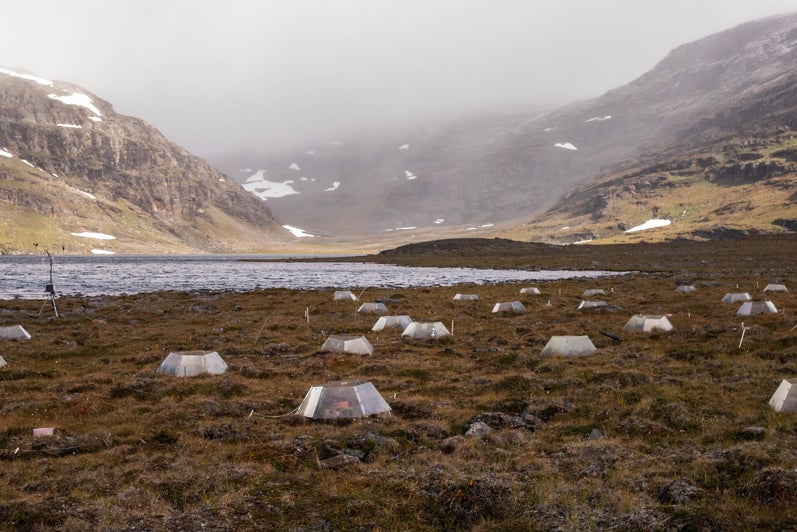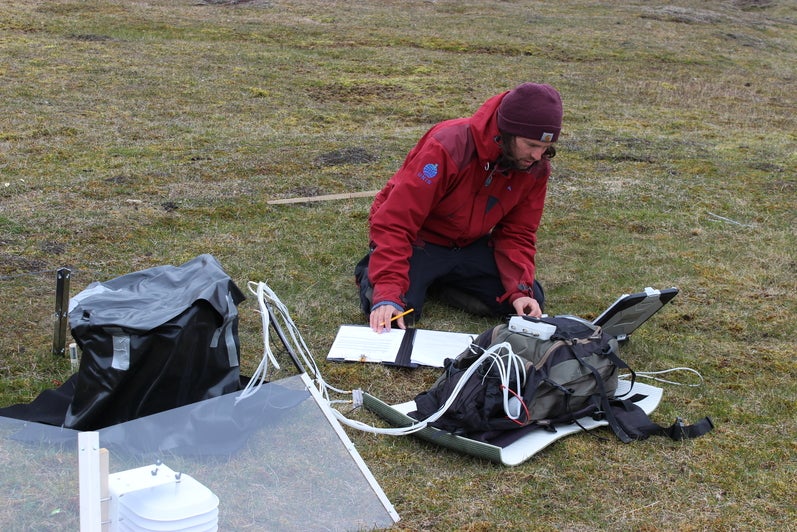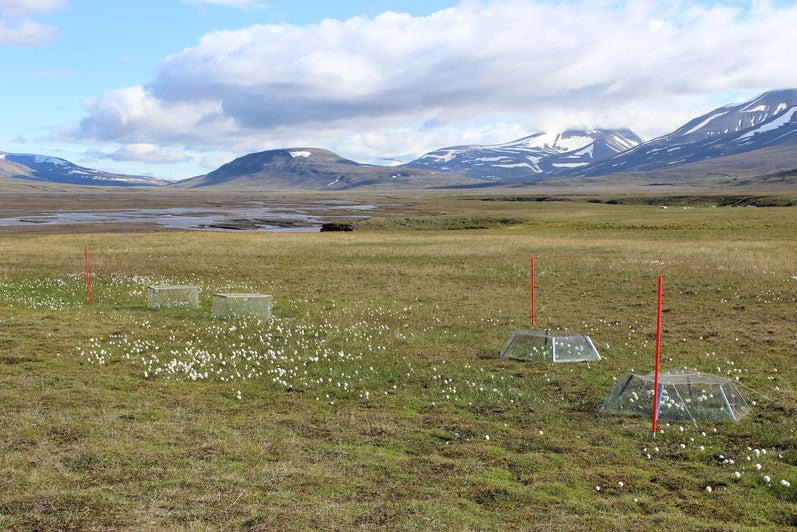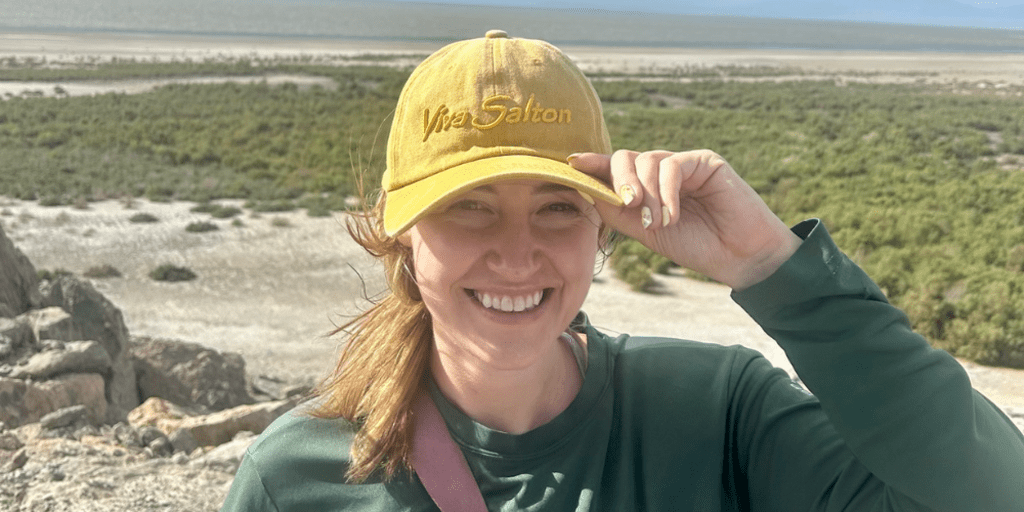Tundra warming unleashes surprising carbon release
Estimated reading time: 2 minutes | Photo of Dr. Strack in her field site in northern Alberta taken by Jason Cagampan.
A new study published in Nature finds large stocks of carbon in tundra soils might release four times more carbon due to climate warming.
The study is the first-of-its-kind that shows our warming climate shifts the dynamics of tundra environments and makes them release trapped carbon. These changes could transform tundra ecosystems from carbon sinks into a carbon source, exacerbating the effects of climate change.
"We knew from earlier studies that we were likely to find an increase in respiration with warming, but our study reveals a remarkable increase, nearly four times greater than previously estimated from the tundra although it fluctuated over time and space," says Dr. Sybryn Maes from Umea University in Sweden and lead author of the study.
The team of over 70 scientists included Dr. Maria Strack in the Department of Geography and Environmental Management. They used a tool called open-top chambers, which act like mini-greenhouses, to simulate climate warming around the world. The researchers compared data from inside and outside these devices and found the devices led to a 1.4°C rise in air temperature and a 0.4°C increase in soil temperature, accompanied by a 1.6% decrease in soil moisture. This warming triggered a remarkable 30% increase in carbon release that persisted for at least 25 years after the start of the experimental warming.
The study also revealed that the size of the increase varied depending on local soil conditions such as nitrogen and pH levels and it showed that the sustained response across decades does not wane in the long term, which was unclear until now.
“The increase in carbon dioxide release that we observed came from both greater soil and plant activity,” Strack says. “Future work will need to figure out if these increases in plant growth are enough to balance out the observed increase in carbon emission.”
The researchers note that Canada exhibits greater sensitivity to warming, but additional field work is key to addressing the outstanding uncertainties and refine predictions.
“Investment in long-term northern research stations is key to understanding how these regions will respond to climate change,” Strack says. “This study is an excellent example of the important insights that can be gained when standard methods are adopted by research teams allowing comparison among studies.”
In the future, this real-world data on the relationship between soil conditions and respiration can improve climate models used to predict future carbon emissions. The more real-world information we can input into models, the better predictions will be.
The study, Environmental drivers of increased ecosystem respiration in a warming tundra, appears in the journal Nature.







